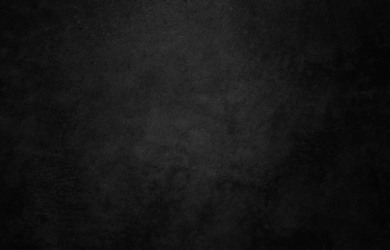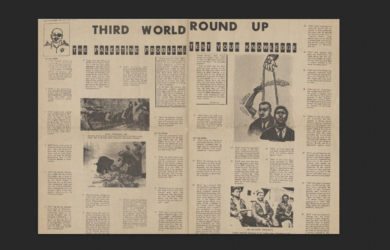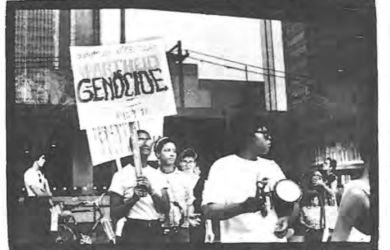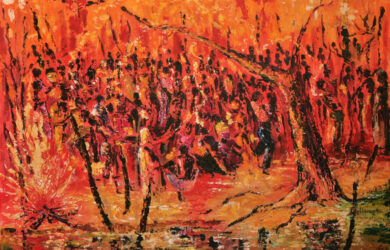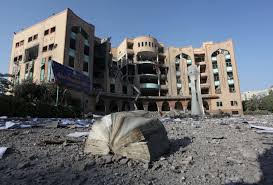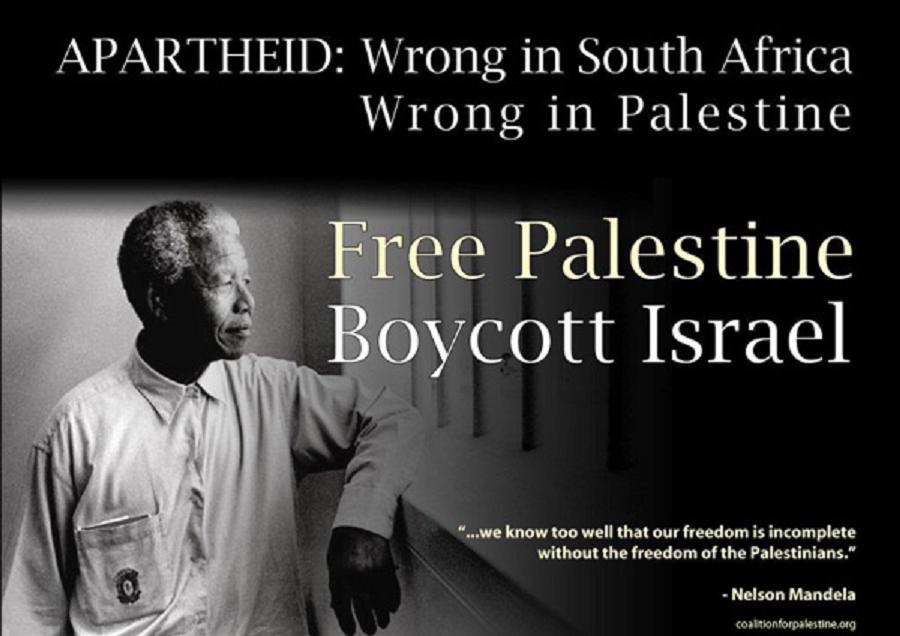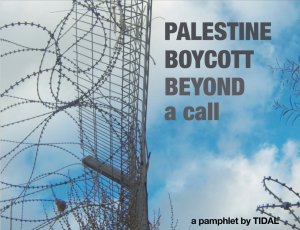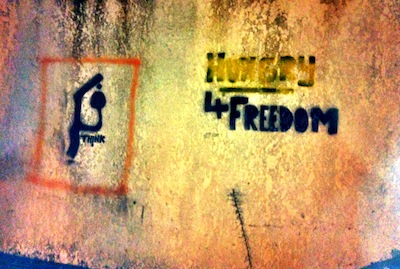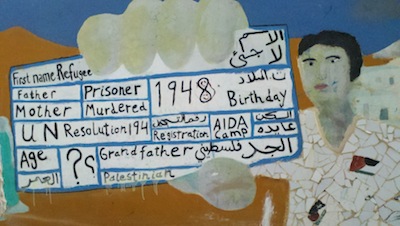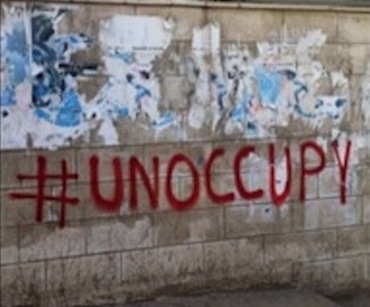In November 2023, I presented a paper entitled “Settler Colonialism as the Automation of Attritional Warfare,” based on South Africa’s history of racialized governance, at Duke University and at the University of British Columbia. This is the revised version of … Continue reading “Epistemic Debilitation and the Erasure of Genocide”
Tag: apartheid
Palestine and the Contours of the Third World
Rahul RaoNo one watching the proceedings in the International Court of Justice on January 11 and 12, 2024—when South Africa accused Israel of genocide in Gaza—could have missed the racialized geopolitical atmospherics of the moment. On the South African side stood … Continue reading “Palestine and the Contours of the Third World”
No Human Animals: On Black Solidarity with Palestine and the Defense of Life
Robyn MaynardThis lightly edited speech was written for the November 4 Free Palestine: National Day of Action in Montreal that was organized by the Palestinian Youth Movement. I am standing here in solidarity with the Palestinian peoples who are today demanding … Continue reading “No Human Animals: On Black Solidarity with Palestine and the Defense of Life”
And the Last Shall be First: On the (Im)possibility of Revenge
Bedour AlagraaOur god who is good to us orders us to revenge our wrongs. He will direct our arms and aid us. Throw away the symbol of the god of the whites who has so often caused us to weep, and … Continue reading “And the Last Shall be First: On the (Im)possibility of Revenge”
BDS: Decolonizing Palestine
Haidar EidBecause I am a Palestinian, born to a “goy mother,” I do not have the option of leaving the blockaded Gaza Strip where I live to attend a conference, or a give a talk at any international academic institution. Along … Continue reading “BDS: Decolonizing Palestine”
An Anti-Racist Movement
Robin D. G. KelleyThe summer of 2014 was a crucial historical conjuncture in which Palestinian-Black solidarity both deepened and became more complex, as Angela Davis’s latest book, Freedom is a Constant Struggle (2015) was absolutely right to identify. The killings of Eric Garner, … Continue reading “An Anti-Racist Movement”
Palestine, Boycott, and Beyond: The Time is Now
Amin Husain, Yates McKee and Nitasha DhillonThe following appears reprinted from Tidal Occupy Theory. We present this pamphlet at an historic moment in the United States, and by extension the broader geopolitical order over which the United States presides. In recent months, the shackles that … Continue reading “Palestine, Boycott, and Beyond: The Time is Now”
Palestine Diaries
Nikhil Pal SinghWhen I told the Israeli border official who interviewed me that I was going to Ramallah, she sneered and wrinkled her brow: “Okay.” Why would anyone go there, she seemed to say. There was no mistaking her disapproval. Looking … Continue reading “Palestine Diaries”
Normalized Supremacy, Dignifying Resistance
Robin D. G. KelleyI arrived in Ramallah well prepared . . . or so I thought. I’d read Saree Makdisi’s chilling portrait of Palestinian life under occupation, historical accounts by Rashid Khalidi, Walid Khalidi, Ilan Pappe, Nur Mashala, and Gabriel Piterberg, powerful critiques of Israeli apartheid leveled by Ali Abunimah, Omar Baghouti, and Uri Davis, exposés penned by Israeli journalists Amira Hass and Gideon Levy, as well as pro-Zionist voices such as Amos Oz and A.B. Yehoshua. I had Edward Said by my side, and the Electronic Intifada and the Palestine Monitor in my web browser. Our small delegation, formed at the behest of the U.S. Academic and Cultural Boycott of Israel, consisted of some of the smartest people I know, their collective knowledge of the situation surpassed only by our hosts at Birzeit University in Ramallah. We were there on a fact-finding mission.
One Occupation
j. kehaulani kauanuiWhen reflecting on the week-long visit to Occupied Palestine and Israel – the delegation organized by the US Campaign for the Academic and Cultural Boycott of Israel (USACBI) – in some ways, the meeting that was the most provocative was with the Palestinian academics who hosted us at a public policy research center in Haifa called Mada al-Carmel: Arab Center for Applied Social Research. There we encountered critical and incisive perspectives on the academic boycott by Palestinian citizens of Israel that showed how the politics look different from their social location. Their penetrating critiques and our productive dialogue ultimately strengthened my understanding of the situation of fragmentation on the ground in Palestine, and of the need to grapple with this complexity to address what is, after all, one occupation.
Building the Palestinian International
bill v. mullenThe eight meter high Apartheid Wall bordering the Aida Refugee Camp near Bethlehem features a tattered and faded replica of Pablo Picasso’s 1937 painting “Guernica.” The painting famously commemorates the bombing and massacre of nearly 1,600 civilians by Nazi German and Italian warplanes during the fight against fascism in the Spanish Civil War. Hand-painted barbed wire and a Palestinian flag frame the Wall’s reproduction. The caption above reads:
529-2
Social Text CollectiveOn July 1, 2011, the US Campaign for the Academic and Cultural Boycott of Israel (USACBI), sent a letter to several scholars at US universities, inviting them to join a historic delegation to Palestine. The letter began: We … Continue reading “529-2”
ST Members Return from Delegation to Palestine
Social Text CollectiveFive faculty from U.S. universities who recently completed a week-long visit to Occupied Palestine and Israel are calling on academic colleagues everywhere to support the United States Campaign for the Academic and Cultural Boycott of Israel (USACBI).
ST Members Return from Delegation to Palestine
Social Text CollectiveFive faculty from U.S. universities who recently completed a week-long visit to Occupied Palestine and Israel are calling on academic colleagues everywhere to support the United States Campaign for the Academic and Cultural Boycott of Israel (USACBI). The professors, … Continue reading “ST Members Return from Delegation to Palestine”
Why the Question of Palestine is a Feminist Concern
Neferti X. M. TadiarI was recently part of a fact-finding delegation to Palestine organized by the US Academic and Cultural Boycott of Israel. The delegation was composed of concerned academics and scholars based in the U.S., including myself. During our weeklong investigative trip, we were witness to multiple and varied testimonies to and clear evidence of the daily acts of violence, harassment and humiliation that Palestinians are subjected to, both massive and intimate. Individuals from several families living in Eastern Jerusalem told us their personal stories of being physically thrown out of their homes in the middle of the night, their houses pillaged and taken over by settlers (many of whom were only recently residents of the U.S.), their belongings strewn onto the streets only to be looted by morning, their children targeted to bear recurring nightmares of the punishing character of their eviction (being made to see, for example, the displayed burning of their dolls alongside that of their beds).


